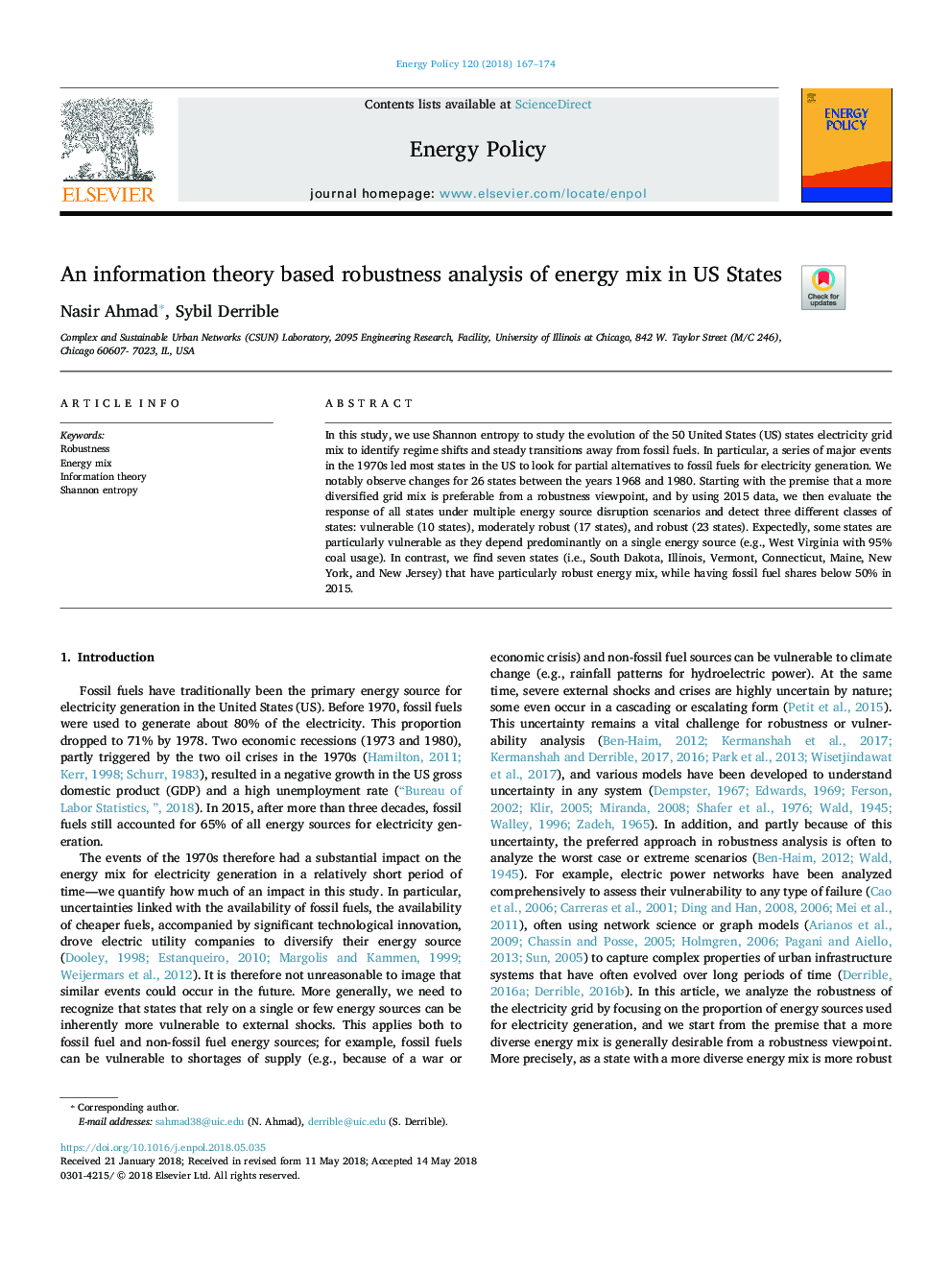| Article ID | Journal | Published Year | Pages | File Type |
|---|---|---|---|---|
| 7397008 | Energy Policy | 2018 | 8 Pages |
Abstract
In this study, we use Shannon entropy to study the evolution of the 50 United States (US) states electricity grid mix to identify regime shifts and steady transitions away from fossil fuels. In particular, a series of major events in the 1970s led most states in the US to look for partial alternatives to fossil fuels for electricity generation. We notably observe changes for 26 states between the years 1968 and 1980. Starting with the premise that a more diversified grid mix is preferable from a robustness viewpoint, and by using 2015 data, we then evaluate the response of all states under multiple energy source disruption scenarios and detect three different classes of states: vulnerable (10 states), moderately robust (17 states), and robust (23 states). Expectedly, some states are particularly vulnerable as they depend predominantly on a single energy source (e.g., West Virginia with 95% coal usage). In contrast, we find seven states (i.e., South Dakota, Illinois, Vermont, Connecticut, Maine, New York, and New Jersey) that have particularly robust energy mix, while having fossil fuel shares below 50% in 2015.
Related Topics
Physical Sciences and Engineering
Energy
Energy Engineering and Power Technology
Authors
Nasir Ahmad, Sybil Derrible,
